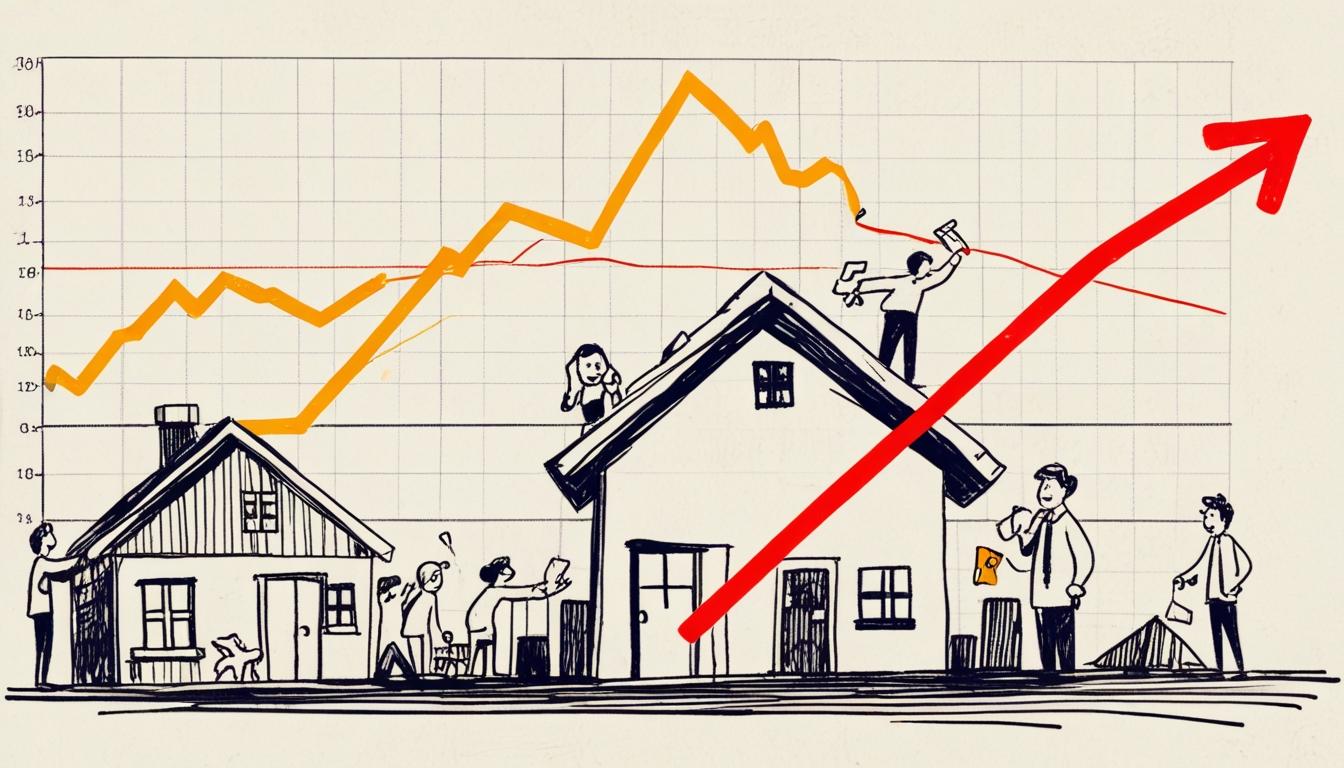Plunging home prices and plunging home sales are generating concern across the US housing market, with some observers drawing parallels to the 2008 financial crisis. The recent downturn is primarily attributed to high mortgage rates, volatile financial markets, and fears of an economic slowdown exacerbated by tariff war anxieties. These factors have led prospective buyers to hesitate before committing to what is often the largest purchase of their lives.
According to reports, national home values have shown a significantly reduced growth rate, increasing by only 1.2 percent year-over-year. Many markets are experiencing actual declines in prices coupled with sales dropping to levels not seen since the last recession. For example, Miami has witnessed a striking 30 percent drop in home sales compared to the recent March average, a downturn that market experts have described as "breathtaking." Meanwhile, in the San Francisco Bay Area, around 20 percent of homes listed for sale reduced their prices in March as they strive to attract increasingly cautious buyers.
Austin, Texas, presents a contrasting situation with an oversupply of housing inventory. This surplus has led several real estate professionals to forecast that Austin could be "the first market to bottom in this housing downturn." This is a notable change from the pandemic period when the city experienced a surge of incoming residents and homes received between 40 and 60 offers each. One Austin realtor described the market as now “more fairly valued” following a price drop of roughly 20 percent from 2022 levels, as shared on the social media platform X.
The current housing market correction is partly due to inflationary pressures linked to a combination of high mortgage rates and limited land availability. Mortgages remain costly, but regulatory obstacles to land development also contribute significantly to price inflation. For instance, in California, rebuilding efforts in fire-damaged areas such as Los Angeles are hampered by land scarcity and strict regulations, making it difficult to address housing shortages.
Experts note that addressing housing affordability will require long-term regulatory reforms, including easing local environmental rules and increasing land availability, especially near metropolitan areas. However, such policy changes will take time and may not immediately alleviate the pressing challenges faced by buyers and sellers today.
Further complicating the market dynamics, many homeowners currently holding adjustable-rate mortgages from pre-pandemic years will soon face rate resets. These mortgages, which may have started at around 3.8 percent interest, are set to readjust to rates approaching seven percent within the next two years, potentially causing significant increases in monthly payments.
Financial advisors advise caution, recommending that homeowners do not allocate more than a third of their after-tax income toward mortgage payments to avoid financial distress. Additional homeownership costs such as maintenance, property taxes, and unexpected expenses can add another 10 to 15 percent to monthly financial obligations. They caution against rushing into purchases beyond one’s financial means and suggest starting with more affordable homes, with the option to move up in the market as income increases.
The current scenario reflects a shift towards a more balanced housing market after years of rapid price escalation, influenced by both market and regulatory factors. The evolving landscape will continue to impact buyers, sellers, and homeowners navigating the challenges posed by high mortgage rates and limited housing supply. The Daily Mail is reporting on these developments as the housing sector adapts to new economic conditions.
Source: Noah Wire Services
